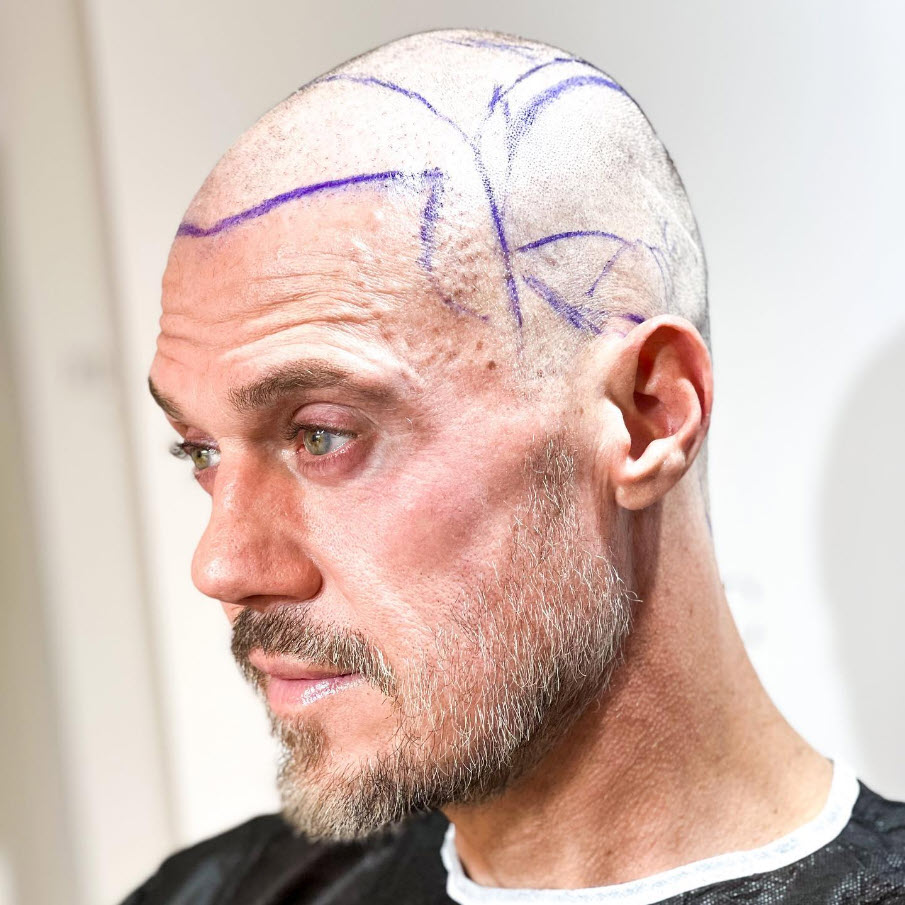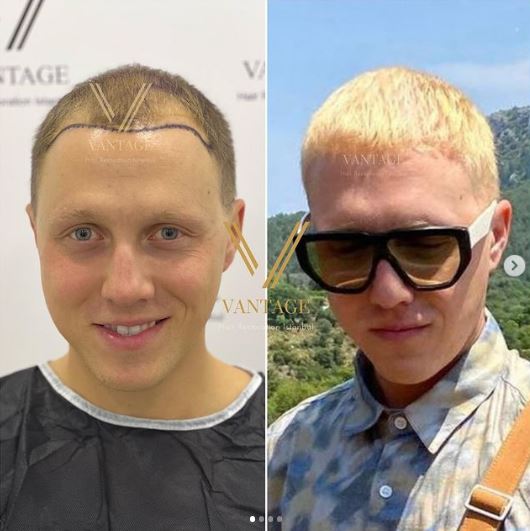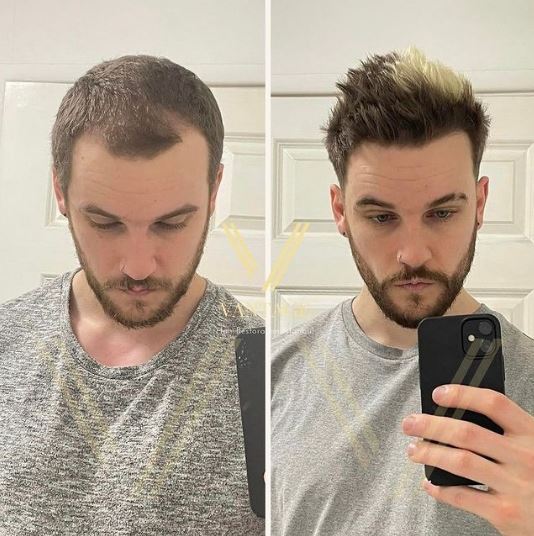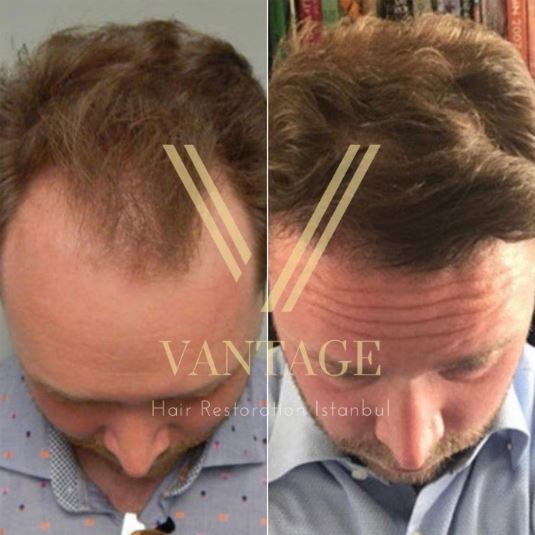Understanding the Hair Plugs

In the domain of hair transplantation, “Hair plugs” denote clusters of hair follicles extracted from a donor area and implanted into regions of scalp experiencing thinning or baldness. These plugs typically contain multiple follicles and are larger in diameter compared to individual follicular units.
Traditionally, hair transplantation relied on the transplantation of these bulky plugs, leading to an unnatural appearance due to hair clumping and graft size. This outdated approach has given way to more sophisticated methods, notably Follicular Unit Extraction (FUE) and Direct Hair Implantation (DHI). These techniques prioritize the transplantation of individual follicular units for a more natural aesthetic.
Hair plugs represent an antiquated method, whereas modern hair transplantation techniques like FUE and DHI prioritize individual follicular units for superior and natural-looking results.
How Hair Plugs Procedure Works?
The hair plugs procedure, an older technique in hair transplantation, involved several steps:
Donor Site Preparation
- The procedure begins with the identification and preparation of the donor site, typically located at the back or sides of the scalp where hair is more resistant to balding.
- The donor area is numbed with a local anesthetic to minimize discomfort during the extraction process.
Harvesting Hair Plugs:
- Using a punch biopsy tool or similar instrument, the surgeon removes circular sections of scalp tissue containing multiple hair follicles from the donor site.
- These circular grafts, or “plugs,” typically contain around 10 to 20 hairs each and are usually larger in diameter compared to the individual follicular units used in modern techniques.
Recipient Site Creation
- Once the hair plugs are harvested, the surgeon creates recipient sites in the recipient area of the scalp, where hair is thinning or balding.
- The size and spacing of these recipient sites are crucial for achieving a natural-looking result.
Transplanting Hair Plugs
- The harvested hair plugs are then transplanted into the recipient sites using forceps or similar tools.
- The surgeon strategically places the plugs at the desired angles and densities to achieve the desired aesthetic outcome.
- The plugs are typically spaced apart to cover the bald or thinning areas evenly.
Post-Procedure Care
- After the transplantation is complete, the patient is provided with post-operative care instructions, including how to care for the transplanted area, manage any discomfort, and prevent infection.
- Patients may be advised to avoid strenuous activities and follow a specific post-operative care regimen to optimize healing and graft survival.
Follow-Up Visits
- Follow-up appointments with the surgeon are scheduled to monitor the progress of the transplant and address any concerns or complications that may arise.
- Hair growth from the transplanted plugs typically begins within a few months, with full results becoming apparent over the course of several months to a year.
Why some hair plugs gone wrong in the past?
Hair plugs, while once a common technique for hair transplantation, have largely been replaced by more advanced methods due to several limitations and potential complications that can arise. Here are some reasons why hair plugs can go wrong:
Unnatural Appearance: One of the most significant drawbacks of hair plugs is their tendency to result in an unnatural appearance. The large size of the grafts and the clumping of hairs can lead to a “pluggy” look, where the transplanted hair appears obvious and does not blend well with the surrounding natural hair.
Poor Hairline Design: Hair plugs may sometimes result in an unnatural hairline design if not carefully planned and executed. A poorly designed hairline, such as one that is too straight or too low, can detract from the overall aesthetic result and make the transplant obvious.
Scarring: The extraction of large punch grafts for hair plugs can result in noticeable scarring in the donor area, particularly in patients with tight scalp skin or those who undergo multiple procedures. This scarring can be unsightly and may limit the patient’s ability to wear shorter hairstyles without visible signs of transplantation.
Survival Rate: The survival rate of hair plugs may vary, and in some cases, a significant percentage of the transplanted grafts may fail to survive or grow properly. Factors such as inadequate blood supply, trauma during transplantation, and improper handling of grafts can contribute to poor graft survival.
Mismatched Hair Characteristics: Hair plugs may not always match the natural hair characteristics of the recipient area, leading to discrepancies in hair texture, color, and curl pattern. This mismatch can further contribute to an unnatural appearance and dissatisfaction with the results.
Limited Coverage: Due to the size of the grafts used in hair plugs, coverage of the bald or thinning areas may be limited. This can result in an uneven or patchy appearance, especially in cases of extensive hair loss.
Longer Recovery Time: The recovery time associated with hair plugs can be longer compared to more modern hair transplantation techniques. Patients may experience discomfort, swelling, and longer healing times, which can impact their overall satisfaction with the procedure.
Can I repeat hair transplant with Latest Technology?
Yes, if you have undergone a hair plugs procedure in the past and are now interested in transplanting your hair using newer technologies such as Direct Hair Transplant (DHI) or Follicular Unit Extraction (FUE), you can certainly explore this option.
However, it’s essential to consult with a qualified hair transplant surgeon to assess your specific situation and determine the feasibility of undergoing another hair transplant procedure. Factors such as the condition of your scalp, the presence of scarring from previous surgeries, and the availability of donor hair will be considered during the evaluation process.
In many cases, individuals who have previously undergone hair plugs procedures can still benefit from modern hair transplant techniques. These advanced methods offer more natural-looking results, minimal scarring, and a smoother recovery compared to traditional hair plugs. A skilled surgeon will be able to tailor the procedure to meet your needs and achieve the best possible outcome for your hair restoration goals.
Hair Plugs vs Hair Transplantation
Hair plugs and hair transplantation are related terms, but they refer to different techniques within the broader field of hair restoration.
Hair Plugs Technology
Hair plugs refer to an outdated hair transplantation technique that was popular in the past, particularly in the 1950s to 1980s.
Hair plugs involved transplanting large grafts or plugs of hair follicles from the donor area (typically the back or sides of the scalp) to the recipient area (where hair is thinning or balding).
These plugs contained multiple hair follicles and were usually larger in diameter, resulting in a “pluggy” appearance after transplantation.
Due to the larger size of the grafts and the clumping of hairs, hair plugs often produced unnatural-looking results.
Hair Transplantation Latest Technologies
Hair transplantation, encompassing various modern techniques, effectively addresses hair loss or baldness.
Follicular Unit Extraction (FUE) and Direct Hair Implantation (DHI) are the primary methods used today. FUE involves extracting follicular units directly from the scalp one at a time using a small punch tool, avoiding a linear incision. Conversely, DHI implants hair follicles directly into the recipient area using a specialized tool, ensuring precise placement and minimal trauma to the scalp.
These advanced techniques offer more natural-looking results than traditional hair plugs, enhancing patient satisfaction and confidence. FUE and DHI represent the pinnacle of modern hair restoration, providing seamless integration with existing hair growth patterns and minimal scarring.
Difference Between Hair Plugs and Modern Hair Transplantation
The difference between hair plugs and modern hair transplantation lies in the techniques used and the results achieved.
Hair plugs, an outdated technique popular from the 1950s to 1980s, involved transplanting large grafts or plugs of hair follicles from the donor area to the recipient area. These plugs were larger in diameter and contained multiple follicles, resulting in a “pluggy” appearance that often looked unnatural due to the clumping of hairs.
In contrast, modern hair transplantation techniques such as Follicular Unit Extraction (FUE) and Direct Hair Implantation (DHI) offer more refined and natural-looking results. FUE involves extracting individual follicular units directly from the scalp using a small punch tool, while DHI implants follicles directly into the recipient area with precision and minimal trauma to the scalp. These advanced techniques provide seamless integration with existing hair growth patterns and minimal scarring, enhancing patient satisfaction and confidence.
Overall, the key difference lies in the outdated nature of hair plugs compared to the advanced and more natural-looking results achieved with modern hair transplantation methods like FUE and DHI.
Alternatives of Hair Plugs Process
The latest in hair transplant technology, including the innovative Follicular Unit Extraction (FUE) and Direct Hair Implantation (DHI) methods, delivers outstanding results. FUE and DHI revolutionize hair restoration by providing natural-looking outcomes with minimal scarring and high success rates.
These advanced techniques represent a significant improvement over older methods like hair plugs, which often resulted in an unnatural appearance. With FUE and DHI, individual follicular units are carefully extracted and implanted, seamlessly blending with existing hair growth patterns. Moreover, both methods leave minimal scarring—FUE with tiny, easily concealable dot scars, and DHI with negligible trauma to the scalp.
The high survival rate of transplanted grafts ensures excellent density and coverage in the recipient area, enhancing overall aesthetic outcomes. Surgeons can customize the placement of follicles to achieve a natural-looking hairline and optimal density, restoring confidence in patients. Additionally, FUE and DHI procedures offer rapid recovery times, allowing patients to resume normal activities soon after treatment.
Overall, FUE and DHI methods provide long-lasting solutions to hair loss, effectively restoring self-esteem and satisfaction for many individuals.
FUE Hair Transplant
The FUE (Follicular Unit Extraction) hair transplant process involves extracting individual follicular units from the donor area of the scalp and transplanting them into the recipient area where hair is thinning or balding. Using specialized microsurgical tools, hair follicles are harvested one by one, leaving tiny, nearly invisible scars. These follicular units are then meticulously implanted into the recipient area to achieve natural-looking results. With minimal downtime and quick recovery, FUE hair transplant is a popular choice for restoring hair density and confidence. This advanced procedure can cover up to 5,000 grafts in a single session, catering to various degrees of hair loss.
DHI Hair Transplant
DHI (Direct Hair Implantation) is an advanced hair transplant technique falling under the category of Follicular Unit Extraction (FUE). Unlike traditional FUE methods, DHI utilizes a specialized tool called the Choi Implanter Pen to extract and implant hair follicles simultaneously. This pen allows for precise control over the depth, angle, and direction of implantation, resulting in a more natural-looking hairline and denser hair growth. DHI minimizes graft handling and time outside the body, leading to higher graft survival rates. Moreover, the absence of pre-made recipient sites reduces scalp trauma and accelerates healing. Overall, DHI offers an effective solution for hair restoration, providing natural results with minimal downtime and a low risk of complications.
Results after Latest Hair Transplant Technology
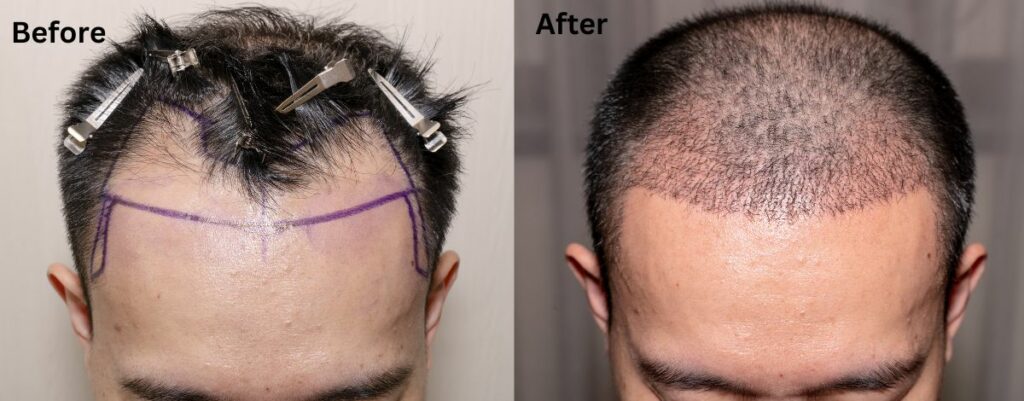
The latest advancements in hair transplant technology, utilizing the innovative Follicular Unit Extraction (FUE) and Direct Hair Implantation (DHI) methods, deliver exceptional results. FUE and DHI revolutionize hair restoration by providing natural-looking outcomes with minimal scarring and high success rates. These cutting-edge methods represent a significant improvement over older techniques like hair plugs, offering seamless integration with the patient’s existing hair growth patterns. FUE leaves tiny, easily concealable dot scars, while DHI minimizes trauma to the scalp. With high graft survival rates, FUE and DHI ensure satisfactory density and coverage, enhancing overall aesthetic outcomes. Surgeons can customize follicle placement to achieve optimal density and create natural-looking hairlines, boosting patient confidence. Additionally, both FUE and DHI procedures offer swift recovery times, allowing patients to resume normal activities promptly. Overall, by looking at the before and after image above, FUE and DHI methods provide long-lasting solutions to hair loss, effectively restoring self-esteem and satisfaction for many individuals.
FAQs about Hair Plugs Process
Are there any downsides to hair plugs?
In the past, hair plugs were associated with a “pluggy” appearance due to the larger size of the grafts and clumping of hairs. Additionally, the procedure could result in visible scarring in both the donor and recipient areas.
What should I expect during the recovery period after the hair plugs procedure?
Patients may experience some swelling, discomfort, and scabbing in the donor and recipient areas immediately following the procedure. It’s important to follow post-operative care instructions provided by your surgeon to ensure proper healing and optimal results.
Is the hair plugs procedure suitable for everyone?
Hair plugs may not be suitable for individuals with certain medical conditions or unrealistic expectations about the results. A consultation with a qualified hair transplant surgeon can help determine if the procedure is right for you.
Will I need multiple sessions of hair plugs?
The number of sessions required depends on the extent of hair loss and the desired outcome. Some patients may achieve satisfactory results with a single session, while others may require multiple sessions spaced several months apart to achieve optimal density and coverage.
Will the transplanted hair plugs require special care or maintenance?
Transplanted hair plugs should be treated like natural hair and will continue to grow normally. Regular washing, conditioning, and styling can help maintain the health and appearance of the transplanted hair. Additionally, it’s important to follow any specific post-operative care instructions provided by your surgeon to ensure optimal healing and results.
Are there any risks or complications associated with the hair plugs procedure?
As with any surgical procedure, there are potential risks and complications associated with hair plugs, including infection, bleeding, scarring, and uneven or unnatural results. It’s important to discuss these risks with your surgeon and carefully follow post-operative care instructions to minimize the risk of complications.
Sources:
Direct Hair Transplantation: A Modified Follicular Unit Extraction Technique
https://www.ncbi.nlm.nih.gov/pmc/articles/PMC3764754/
Article Review By: Dr. Jyothi Shenoy V
Profile Link
MBBS, MD – Obstetrics & Gynaecology, MRCOG(UK)
23 Years Experience Overall

